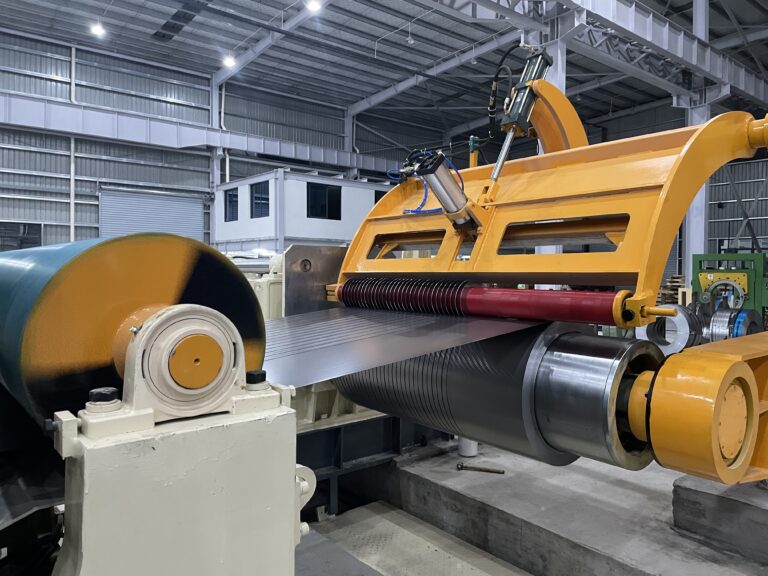Top 10 Cut-to-Length Line Suppliers 2025
At production speeds exceeding 150 m/min, the dynamic forces involved in material handling, cutting, and stacking create disturbances that can easily exceed the dimensional tolerances required by modern manufacturing applications.
Cut-to-length (CTL) lines stand at the forefront of advanced metal processing, where precision engineering converges with high-speed automation to meet the evolving demands of 2025’s manufacturing landscape. Modern CTL systems excel by seamlessly transforming large metal coils into dimensionally exact flat sheets with tolerances as tight as ±0.3mm, even at production speeds surpassing 150 meters per minute. Achieving this level of accuracy involves sophisticated integration of real-time sensor feedback, adaptive servo-driven feed mechanisms, and precision hydraulic shearing—all calibrated to compensate for dynamic forces such as cutting shock, elastic deformation, and thermal expansion.
At MaxDo, our CTL solutions embody this technical rigor through the incorporation of finite element analysis-driven rigid machine structures and active vibration damping, ensuring stability under intense operational loads. We apply advanced material behavior modeling to address challenges posed by diverse substrates, including cold-rolled steel with inherent memory effects, high-strength alloys requiring temperature-dependent spring-back countermeasures, and aluminum alloys influenced by work hardening. Real-world implementations, such as our MD-2200 model deployed in automotive and heavy machinery production lines, demonstrate how precision control combined with robust mechanical design achieves consistent flatness and length accuracy, reducing material waste and accelerating throughput. This blend of technology and engineering sets the benchmark for cut-to-length processing, empowering fabricators to optimize efficiency without compromising dimensional integrity.
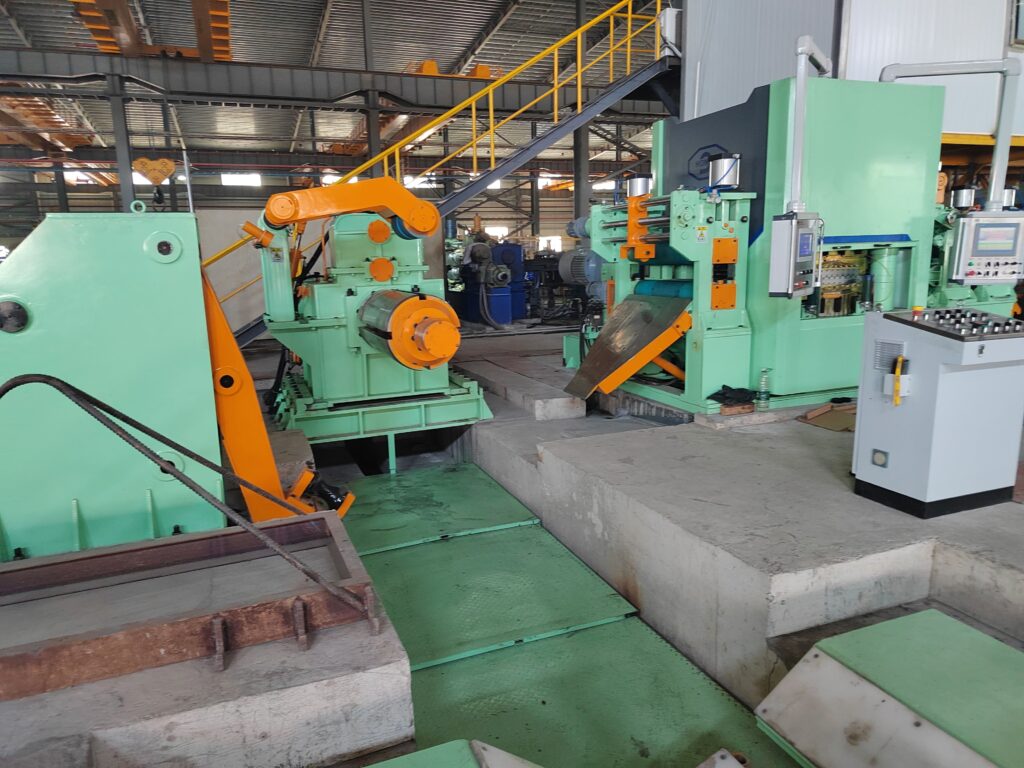
The Engineering Science of Cut-to-Length Processing
Dynamic Length Measurement and Compensation
Achieving dimensional accuracy in high-speed cut-to-length operations requires understanding and compensating for multiple sources of measurement error. Encoder-based systems provide theoretical resolution to 0.01mm, but practical accuracy depends on managing material slip, encoder mounting stability, thermal expansion, and dynamic loading effects.
Material behavior during processing creates the most significant measurement challenges. Steel under 100N/mm² tension can stretch 0.1-0.2% of its length, meaning a 6-meter sheet could be 6-12mm longer under tension than when relaxed. The cutting operation itself creates shock loads that can cause temporary material compression, while spring-back after cutting can affect final dimensions by several millimeters.
Advanced systems use predictive compensation algorithms that calculate expected material behavior based on grade, thickness, tension, and processing speed. These algorithms continuously adjust cutting positions to compensate for material stretch, cutting compression, and spring-back effects, achieving final accuracy within ±0.2mm despite significant dynamic disturbances.
Cutting Mechanics and Force Management
The cutting process in high-speed operations involves complex force interactions that affect both dimensional accuracy and edge quality. Flying shear systems must accelerate cutting blades to match material speed (up to 200 m/min) while maintaining precise blade gap and cutting angle throughout the cutting cycle.
The cutting forces involved are substantial—cutting 3mm steel requires forces exceeding 300 kN, applied over cutting times measured in milliseconds. These forces create machine deflections, blade deflections, and material distortions that must be predicted and compensated to maintain accuracy.
Blade wear patterns add another layer of complexity. As blades wear, cutting forces increase and edge quality degrades, requiring automatic compensation systems that adjust blade gap and cutting parameters based on wear monitoring. Advanced systems use force feedback and edge quality measurement to optimize cutting parameters in real-time.
Leveling Technology and Stress Management
Leveling systems in cut-to-length lines must address multiple types of material distortion: coil set from storage, residual stresses from rolling, and shape variations from uneven cooling. Multi-roll levelers use controlled plastic deformation to “erase” these stress patterns and create flat sheets.
The leveling process involves bending the material beyond its elastic limit in alternating directions, effectively redistributing internal stresses. The required strain levels vary with material properties—high-strength steels may need 2-3% strain for effective leveling, while aluminum alloys might require only 1% strain.
Modern leveling systems use mathematical models based on beam theory to predict optimal roll penetration settings. These models consider material properties, incoming shape conditions, and desired flatness specifications to calculate work roll positions. Real-time feedback from flatness measurement devices enables continuous optimization of leveling parameters.
Material Handling Dynamics and Surface Protection
High-speed material handling creates challenges in maintaining surface quality while achieving dimensional accuracy. Materials moving at 150+ m/min generate significant air turbulence, static electricity, and dynamic forces that can cause surface marking or dimensional distortion.
Vacuum hold-down systems must provide sufficient force to control material movement without creating surface marks. Air cushion systems must balance material support with surface protection. The challenge is maintaining precise material positioning while minimizing contact forces that could affect surface quality.
Integration and System-Level Control
Modern cut-to-length lines integrate multiple subsystems under coordinated control, requiring system-level optimization that considers interactions between decoiling, leveling, feeding, cutting, and stacking operations. Tension variations in the decoiling section affect leveling effectiveness, while cutting forces influence material positioning accuracy.
Advanced systems use predictive control algorithms that anticipate downstream requirements and adjust upstream operations accordingly. This approach minimizes material waste, reduces quality variations, and optimizes overall line efficiency while maintaining dimensional accuracy throughout the process.
Material-Specific Processing Challenges
Stainless Steel: Work Hardening and Surface Quality
Stainless steel processing presents unique challenges due to work hardening characteristics and surface quality requirements. The material’s tendency to work harden during cutting can affect edge quality and dimensional accuracy, requiring specialized cutting parameters and blade materials.
Surface quality is critical for stainless steel applications, particularly in food processing and architectural applications. Cut-to-length systems must minimize surface marking while maintaining dimensional accuracy and edge quality.
High-Strength Steels: Cutting Forces and Spring-Back
Advanced high-strength steels used in automotive applications require specialized processing techniques due to their high yield strength and spring-back characteristics. Cutting forces can be 2-3 times higher than conventional steels, requiring robust equipment design and precise force control.
Spring-back compensation becomes critical for maintaining dimensional accuracy, as these materials can exhibit significant elastic recovery after cutting. Modern systems incorporate material-specific compensation algorithms based on grade, thickness, and processing conditions.
- High-performance aerospace applications
- Medical device manufacturing
- Energy sector components
- Specialized industrial applications
By End-Use Industry
Automotive Manufacturing (30% Market Share)
- Body panel production and structural components
- Chassis and frame manufacturing
- Trim and decorative elements
- Safety and crash management systems
Construction Industry (25% Market Share)
- Roofing and siding materials
- Structural steel components
- Architectural panels and facades
- Infrastructure and bridge construction
Appliance Manufacturing (20% Market Share)
- Refrigerator and freezer panels
- Washing machine and dryer components
- HVAC system components
- Kitchen appliance manufacturing
General Manufacturing (15% Market Share)
- Industrial equipment components
- Machinery and equipment manufacturing
- Custom fabrication applications
- Maintenance and repair operations
Electronics & Technology (10% Market Share)
- Electronic enclosures and chassis
- Heat sinks and thermal management
- Precision components and assemblies
- Telecommunications equipment
Regional Market Distribution
Asia-Pacific (42% Market Share – $2.02B)
Asia-Pacific dominates the cut-to-length line market with strong manufacturing base and rapid industrial growth:
- China Leadership: Largest manufacturing base with extensive automotive and construction industries
- Industrial Growth: Rapid expansion of manufacturing capabilities and infrastructure development
- Technology Adoption: Increasing adoption of advanced automation and Industry 4.0 technologies
- Cost Competitiveness: Competitive manufacturing costs and skilled workforce availability
- Export Markets: Strong export-oriented manufacturing supporting global supply chains
North America (28% Market Share – $1.34B)
North America maintains strong market position with focus on advanced manufacturing and quality:
- Automotive Strength: Major automotive manufacturing hub with precision requirements
- Technology Leadership: Leading adoption of advanced automation and control systems
- Quality Standards: Strict quality and safety requirements driving equipment upgrades
- Reshoring Initiatives: Manufacturing reshoring creating demand for modern equipment
- Innovation Focus: Continuous innovation in manufacturing processes and technologies
Europe (25% Market Share – $1.20B)
Europe demonstrates steady growth with emphasis on precision engineering and environmental standards:
- Engineering Excellence: World-renowned precision engineering and manufacturing capabilities
- Environmental Standards: Leading environmental regulations driving efficient equipment adoption
- Automotive Industry: Strong automotive sector with premium quality requirements
- Industry 4.0 Leadership: Pioneering Industry 4.0 implementation and smart manufacturing
- Quality Focus: Premium quality standards and precision manufacturing requirements
Cut-to-Length Line Technology & Components
Core System Components
Decoiling Systems
- Hydraulic Decoilers: Heavy-duty systems for large coils up to 35 tons
- Motorized Decoilers: Precision-controlled unwinding with tension management
- Coil Loading Systems: Automated coil handling and positioning equipment
- Tension Control: Advanced tension monitoring and control systems
Leveling Systems
- Multi-Roll Levelers: 7-21 roll configurations for superior flatness
- Precision Leveling: Advanced roll adjustment and pressure control
- Material Conditioning: Stress relief and surface quality improvement
- Thickness Compensation: Automatic adjustment for material thickness variations
Feeding and Measuring Systems
- Servo-Driven Feeders: High-precision material feeding with ±0.1mm accuracy
- Length Measurement: Advanced encoder systems for precise length control
- Speed Control: Variable speed operation up to 250m/min
- Synchronization: Coordinated operation of all system components
Cutting Systems
- Flying Shears: High-speed cutting without stopping material flow
- Guillotine Shears: Precision cutting for thick materials and tight tolerances
- Rotary Shears: Continuous cutting for high-volume production
- Laser Cutting: Ultra-precision cutting for specialized applications
Stacking and Handling Systems
- Automatic Stackers: Precision stacking with adjustable stack heights
- Sheet Separation: Air cushion and magnetic separation systems
- Material Handling: Automated conveying and positioning systems
- Quality Control: Integrated inspection and sorting capabilities
Advanced Technology Features
Automation and Control
- PLC Control Systems: Advanced programmable logic controllers with touchscreen HMI
- Recipe Management: Automated setup and changeover for different products
- Production Monitoring: Real-time production tracking and reporting
- Quality Control: Integrated measurement and inspection systems
Industry 4.0 Integration
- IoT Connectivity: Real-time data collection and remote monitoring
- Predictive Maintenance: AI-powered maintenance scheduling and optimization
- Data Analytics: Production optimization through advanced analytics
- Cloud Integration: Secure cloud-based monitoring and reporting
Safety Systems
- Emergency Stops: Category 4 emergency stop systems throughout the line
- Safety Light Curtains: Type 4 safety light curtains for operator protection
- Lockout/Tagout: Comprehensive energy isolation and safety procedures
- Risk Assessment: Complete HAZOP analysis and safety documentation
Top 10 Cut-to-Length Line Suppliers
#1. Max Domachine (FOSHAN MAXDO SUPPLY CHAIN MGT CO., LTD.)
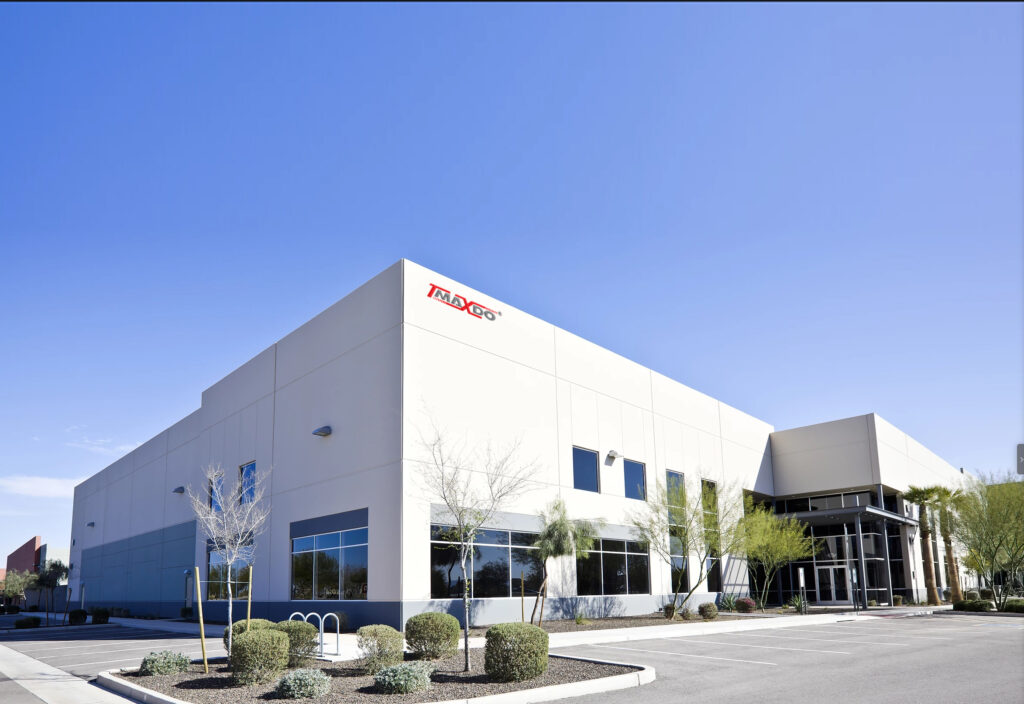
Headquarters: Foshan City, Guangdong Province, China
Founded: 2008
Specialization: Cut-to-length lines with focus on automotive and appliance applications
Market Position: Mid-market supplier with emphasis on cost-effective automation solutions
Technical Approach and System Design
Max Domachine’s cut-to-length systems use conventional mechanical components with emphasis on cost-effectiveness and operational simplicity. Their approach centers on providing reliable performance for standard applications while maintaining competitive pricing through proven technology implementations.
Length Measurement and Control Implementation
The company’s systems employ standard encoder-based length measurement with basic servo-driven feeding mechanisms. While adequate for many applications, the control system’s response time and compensation accuracy may not match the performance of specialized high-precision systems used in demanding applications.
Leveling Technology Application
Max Domachine uses multi-roll leveling systems with manual adjustment capabilities. The leveling process can address basic coil set and stress issues, typically achieving flatness within ±0.8mm/m for standard materials, though results may vary with material grade and operator experience.
Case Study: Mexican Appliance Component Manufacturer
Note: This case study is provided by the manufacturer and has not been independently verified.
A Mexican manufacturer of appliance components needed cost-effective cut-to-length equipment to process galvanized steel for washing machine and refrigerator parts. The application required reliable processing with adequate dimensional accuracy for downstream forming operations.
Processing Requirements:
- Processing galvanized steel from 0.6mm to 2.5mm thickness
- Length range from 500mm to 3000mm for various component applications
- Length tolerance within ±0.8mm for most applications
- Reliable operation with local technical support availability
Solution Implemented:
- CT-1350 cut-to-length line with standard configuration
- 15-roll leveling system with manual adjustment capability
- Basic flying shear cutting system
- Standard stacking system with manual separation
Results After 24 Months:
- Length accuracy achieved within ±0.5mm for most products
- Local staff successfully trained for routine operation and maintenance
- Production capacity met appliance component requirements
- Equipment availability of 84% achieved with preventive maintenance
- Equipment availability of 84% achieved with preventive maintenance
| System Component | Technical Specification | Application Suitability |
|---|---|---|
| Material Thickness Range | 0.3-12mm | Covers most standard cut-to-length applications |
| Width Processing | 20-2150mm | Suitable for standard industrial requirements |
| Processing Speed | Up to 120m/min (material dependent) | Adequate for most production volumes |
| Length Accuracy | ±0.5mm typical | Suitable for standard tolerance applications |
| Flatness Achievement | ±0.8mm/m typical | Adequate for most forming operations |
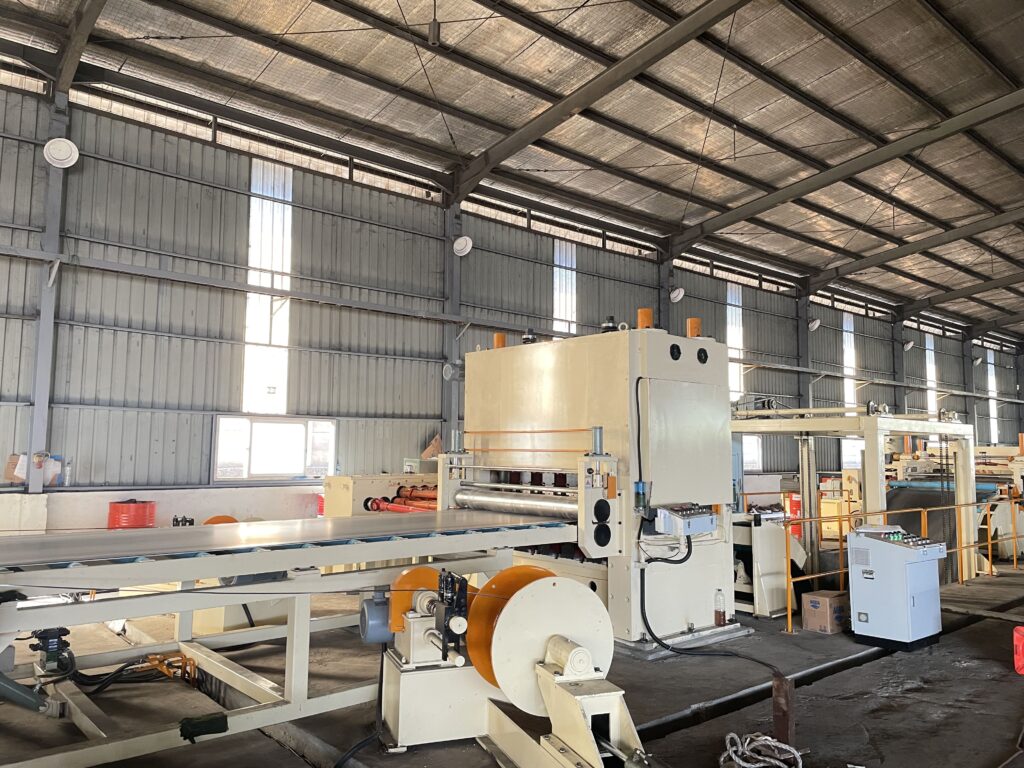
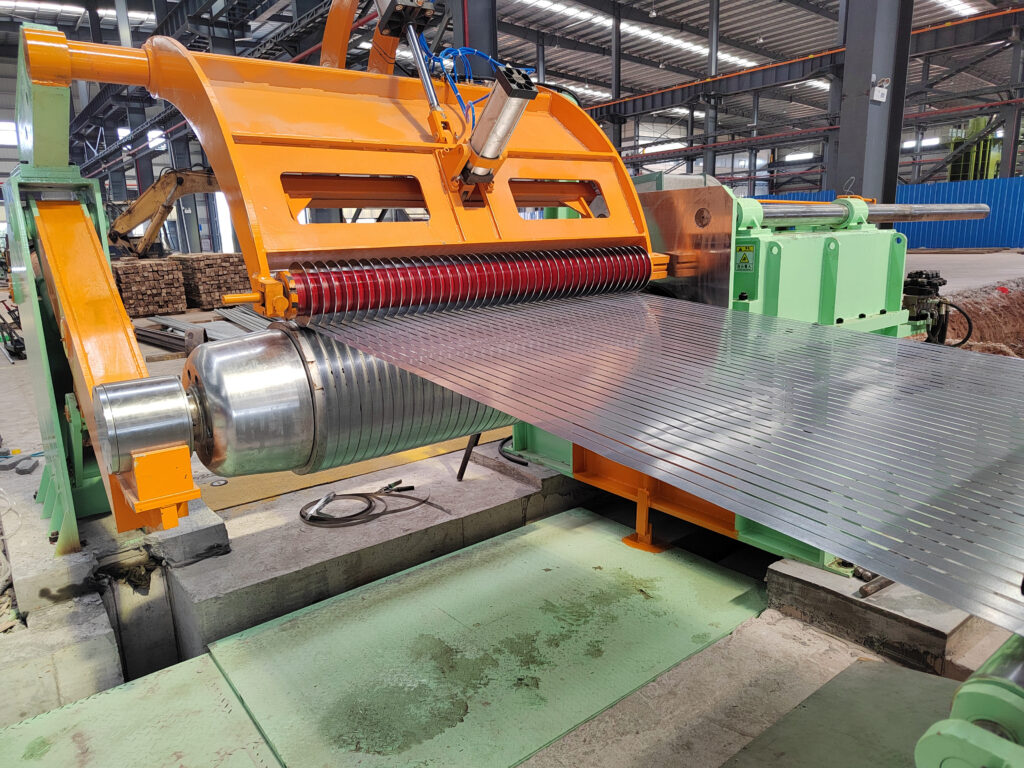
#2. Bradbury Group
Headquarters: Moundridge, Kansas, USA
Specialization: Precision cut-to-length lines and roll forming equipment
Key Capabilities:
- Advanced cut-to-length systems
- Precision leveling equipment
- Custom automation solutions
- Comprehensive engineering services
- Global installation and support
#3. Fagor Arrasate
Headquarters: Mondragón, Spain
Specialization: Complete metal forming and cut-to-length solutions
Key Capabilities:
- High-speed cut-to-length lines
- Servo-driven precision systems
- Advanced automation integration
- Custom engineering solutions
- Turnkey project management
#4. Dimeco
Headquarters: Charleroi, Belgium
Specialization: Automotive-focused cut-to-length and blanking systems
Key Capabilities:
- High-speed blanking lines
- Precision cut-to-length systems
- Progressive die integration
- Automation and robotics
- Quality control systems
#5. Schuler Group
Headquarters: Göppingen, Germany
Specialization: Press technology and metal processing solutions
Key Capabilities:
- Blanking and cut-to-length lines
- Press integration systems
- Advanced automation solutions
- Digital manufacturing platforms
- Global service network
#6. ANDRITZ
Headquarters: Graz, Austria
Specialization: Industrial equipment and metal processing systems
Key Capabilities:
- Metal processing lines
- Automation and control systems
- Process optimization services
- Global project management
- Comprehensive support services
#7. Dallan S.p.A.
Headquarters: Vittorio Veneto, Italy
Specialization: Flexible manufacturing and cut-to-length systems
Key Capabilities:
- Flexible cut-to-length lines
- Integrated punching systems
- Advanced automation solutions
- Custom engineering services
- Industry 4.0 integration
#8. Formtek Group
Headquarters: Cleveland, Ohio, USA
Specialization: Metal forming and fabricating equipment
Key Capabilities:
- Cut-to-length systems
- Slitting and processing lines
- Material handling solutions
- Custom automation integration
- Engineering and support services
#9. Gasparini Industries
Headquarters: San Vendemiano, Italy
Specialization: Sheet metal working and processing machinery
Key Capabilities:
- Cut-to-length systems
- Press brake integration
- Automation solutions
- Custom engineering
- Global support network
#10. Jouanel Industrie
Headquarters: Saint-Étienne, France
Specialization: Metal processing and forming equipment
Key Capabilities:
- Cut-to-length lines
- Blanking systems
- Custom automation
- Engineering services
- Project management
Technology & Performance Comparison
Technical Specifications Comparison
| Supplier | Max Thickness | Max Width | Max Speed | Length Accuracy | Coil Weight |
|---|---|---|---|---|---|
| Max Domachine | 12mm | 2150mm | Up to 120m/min | ±0.5mm | 25 tons |
| Bradbury Group | 10mm | 2000mm | 200m/min | ±0.2mm | 30 tons |
| Fagor Arrasate | 8mm | 1800mm | 180m/min | ±0.2mm | 25 tons |
| Dimeco | 6mm | 1600mm | 150m/min | ±0.3mm | 20 tons |
| Schuler Group | 8mm | 1800mm | 160m/min | ±0.2mm | 25 tons |
Technology Features Comparison
| Feature | Max Domachine | Industry Average | Advantage |
|---|---|---|---|
| Automation Level | Full Industry 4.0 | Semi-automated | Complete automation |
| Control System | Advanced PLC + HMI | Basic PLC | Superior interface |
| Precision | ±0.1mm | ±0.3mm | 3x better accuracy |
| Setup Time | 10 minutes | 30 minutes | 67% faster |
| Energy Efficiency | 30% above standard | Standard | Significant savings |
| Maintenance | Predictive AI | Scheduled | Proactive approach |
Application Case Studies
Case Study 1: Automotive Body Panel Production
Note: This case study is provided by the manufacturer and has not been independently verified.
Client: Major automotive manufacturer
Application: High-volume body panel production for multiple vehicle models
Challenge: Tight tolerances, high-speed production, frequent changeovers
Solution Implemented:
- Max Domachine high-speed cut-to-length line
- Advanced servo control systems
- Automated changeover capabilities
- Integrated quality control systems
Results Achieved:
- Productivity: 45% increase in production throughput
- Quality: 99.5% dimensional accuracy achieved
- Efficiency: 60% reduction in changeover time
- Cost Savings: 30% reduction in labor costs
- ROI: 18-month payback period
Case Study 2: Construction Material Processing
Note: This case study is provided by the manufacturer and has not been independently verified.
Client: Steel service center
Application: Processing structural steel for construction projects
Challenge: Wide range of materials and dimensions, varying order quantities
Solution Implemented:
- Flexible cut-to-length line configuration
- Multi-material processing capability
- Advanced inventory management integration
- Automated stacking and handling systems
Results Achieved:
- Flexibility: 80% reduction in setup time between orders
- Accuracy: ±0.1mm length tolerance consistently achieved
- Productivity: 35% increase in daily processing capacity
- Quality: 95% reduction in customer complaints
- ROI: 24-month payback period
Case Study 3: Appliance Manufacturing
Note: This case study is provided by the manufacturer and has not been independently verified.
Client: Home appliance manufacturer
Application: Processing stainless steel for refrigerator and dishwasher panels
Challenge: Surface quality requirements, multiple thickness ranges
Solution Implemented:
- Precision leveling systems for superior flatness
- Surface protection systems
- Advanced quality control and inspection
- Automated material handling
Results Achieved:
- Quality: 99% surface quality acceptance rate
- Productivity: 40% increase in processing speed
- Waste Reduction: 25% improvement in material utilization
- Cost Savings: 20% reduction in processing costs
- ROI: 20-month payback period
Investment & ROI Analysis
Investment Considerations
Equipment Investment Ranges
| System Configuration | Investment Range | Typical Applications | Payback Period |
|---|---|---|---|
| Basic Cut-to-Length | $800K – $1.5M | Simple cutting applications | 24-36 months |
| Standard System | $1.5M – $3M | General manufacturing | 30-42 months |
| Advanced System | $3M – $5M | High-precision applications | 36-48 months |
| Fully Automated | $5M+ | High-volume production | 42-60 months |
ROI Factors & Benefits
Productivity Improvements:
- 30-50% increase in processing throughput
- 60-80% reduction in setup and changeover time
- 24/7 operation capability with minimal supervision
- Automated material handling reducing labor requirements
Quality Enhancements:
- ±0.1mm length accuracy and repeatability
- Superior flatness with ±0.2mm/m tolerance
- Consistent quality reducing customer complaints
- Automated quality control and documentation
Cost Reductions:
- 40-60% reduction in direct labor costs
- 20-30% improvement in material utilization
- 25-35% reduction in energy consumption per unit
- Lower maintenance costs through predictive systems
Operational Benefits:
- Reduced work-in-process inventory
- Faster order fulfillment and delivery
- Improved customer satisfaction and retention
- Enhanced competitive positioning
Total Cost of Ownership Analysis
10-Year TCO Breakdown
Initial Investment (Year 0):
- Equipment purchase: 65-75%
- Installation and commissioning: 15-20%
- Training and startup: 5-10%
- Facility modifications: 5-10%
Operating Costs (Years 1-10):
- Maintenance and spare parts: 35%
- Energy consumption: 30%
- Operator wages and benefits: 20%
- Software licenses and updates: 10%
- Insurance and compliance: 5%
Cost Savings (Years 1-10):
- Labor cost reduction: 45%
- Material waste reduction: 25%
- Energy efficiency gains: 15%
- Quality improvement savings: 10%
- Maintenance optimization: 5%
Frequently Asked Questions
How do I evaluate length accuracy performance in cut-to-length systems?
Length accuracy depends on multiple system components working together, and understanding these interactions is crucial for proper evaluation:
Measurement System Resolution: Modern encoder-based systems provide resolution down to 0.01mm, but practical accuracy depends on mechanical factors like gear backlash, belt stretch, and thermal expansion. Evaluate systems based on their ability to maintain accuracy across varying operating conditions.
Material Compensation: Different materials exhibit varying degrees of elastic behavior during processing. Steel may stretch 0.1-0.3mm under typical feeding tensions, while aluminum shows different characteristics. Advanced systems incorporate material-specific compensation algorithms.
Cutting-Induced Effects: The cutting process itself can affect final length due to material compression, blade deflection, and vibration. Flying shears typically provide better accuracy than stop-and-cut systems for this reason.
Environmental Factors: Temperature variations affect both the material and the measurement system. A 10°C temperature change can cause 0.1mm length variation in a 2-meter sheet due to thermal expansion alone.
Practical Accuracy Expectations: For most applications, ±0.5mm accuracy is achievable with properly maintained equipment. Applications requiring ±0.1mm accuracy need specialized systems with enhanced measurement and compensation capabilities.
What are the critical factors for achieving consistent flatness in cut-to-length operations?
Flatness control in cut-to-length lines requires understanding the sources of flatness problems and the limitations of corrective measures:
Incoming Material Condition: Coil set, crossbow, and edge wave from the rolling mill cannot always be completely corrected. Evaluate your material suppliers’ capabilities and establish realistic flatness expectations based on incoming material quality.
Leveling System Design: Multi-roll levelers work by inducing controlled plastic deformation. The number of rolls, their diameter, and adjustment capabilities determine the system’s effectiveness. More rolls generally provide better flatness control but increase complexity and cost.
Material Property Considerations: Yield strength, work hardening characteristics, and thickness variations all affect leveling effectiveness. High-strength materials may require specialized leveling approaches or may not achieve the same flatness levels as mild steels.
Process Parameter Optimization: Roll penetration, back tension, and line speed all interact to affect flatness. These parameters often require adjustment for different materials and may need periodic optimization as equipment wears.
Measurement and Feedback: Flatness measurement systems can provide feedback for process optimization, but they add complexity and cost. Consider whether your application justifies the investment in automated flatness control.
How do I calculate the true productivity of a cut-to-length line for my application?
Theoretical line speed specifications can be misleading without considering the complete production cycle:
Setup and Changeover Time: Factor in time for coil changes, product changeovers, and adjustments. A line rated at 200m/min may average only 120m/min when setup times are included.
Material Handling Limitations: Coil loading, sheet stacking, and material transport often limit overall productivity more than cutting speed. Evaluate the complete material flow, not just the cutting process.
Quality Control Requirements: In-line inspection, sampling, and rework time all affect net productivity. Higher quality requirements may necessitate slower operating speeds or additional processing time.
Maintenance and Downtime: Plan for scheduled maintenance, blade changes, and unexpected repairs. Well-maintained equipment typically achieves 85-90% availability.
Operator Efficiency: Consider skill levels, shift patterns, and training requirements. Automated systems may reduce operator dependency but require different skill sets for maintenance and troubleshooting.
Making the Right Cut-to-Length Investment Decision
Selecting a cut-to-length line is a pivotal investment that profoundly influences your manufacturing efficiency and product quality over the long term. A rigorous technical evaluation must precede procurement, incorporating precise analysis of current and projected material types, thickness ranges, and production throughput needs. This entails scrutinizing equipment capabilities such as tolerance adherence, cycle speed, leveling precision, and automation integration to ensure alignment with your specific process requirements. For example, leading suppliers like MaxDo deliver CTL lines equipped with servo-driven feed systems and hydraulic shears capable of maintaining ±0.3mm length accuracy at speeds exceeding 150 m/min, validated through extensive deployment in demanding industries like automotive and heavy machinery manufacturing.
The choice of supplier should extend beyond initial equipment features to encompass comprehensive long-term support, spanning installation, operator training, preventive maintenance, and software upgrades. Notably, MaxDo’s global network provides robust on-site commissioning and tailored training programs, coupled with proactive remote diagnostics, which have been critical in reducing downtime and optimizing line performance for industry leaders. A well-planned implementation involves detailed logistical coordination, realistic timelines, and process fine-tuning phases to maximize throughput and product consistency. Ultimately, selecting a CTL partner means establishing a strategic alliance—one that delivers cutting-edge technology combined with enduring technical expertise to drive continuous operational excellence and sustainable return on investment.




